Everybody forgets about Zambia safari. With Tanzania to one side and Botswana to the other, Zambia easily goes under the radar.
But look a little closer because there is beauty here. There is enchantment and drama that makes for one of Africa’s wildest safari experiences.
Those who do visit Zambia usually do so for one reason: Victoria Falls. Look beyond this famous waterfall and a Zambia safari could be the wild connection you’ve been dreaming about.
This guide leads you through where to go, when to go, what to do, and why Zambia continues to be Africa’s underrated gem.
Essential Information for Visiting Zambia

Where is Zambia?
Zambia is a landlocked country in the heart of Africa. It’s part of an unbroken wilderness area that runs through the heart of the continent. Zambia borders the Democratic Republic of Congo, Tanzania, Malawi, Mozambique, Zimbabwe, Botswana, Namibia and Angola.
How do you get to Zambia?
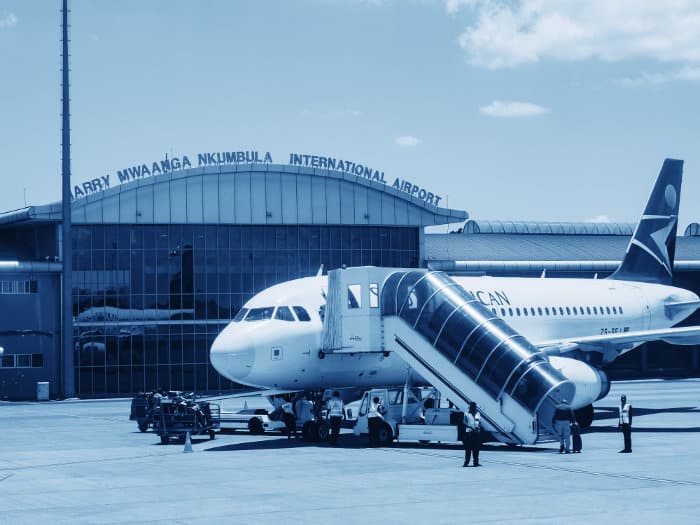
Traveling in Zambia has been made easier by the redevelopment of Livingstone’s international airport – Harry Mwanga Nkumbula International Airport. Harry Nkumbula was the leading figure in Zambia’s fight for independence from colonial rule.
Another option is to fly to Kenneth Kaunda International Airport. That’s located in Lusaka, the capital city.
The vast majority of visitors only make it to Livingstone and Victoria Falls in the far southwest of the country. Livingstone is easily reached overland from Botswana, Zimbabwe or Namibia.
How much does a Zambia safari cost?
Zambian safaris are typically cheaper than other countries in Africa. The park fees are lower and the camps are affordable. For example, a luxury camp in a prime wildlife location will cost USD 400 per person in Zambia, but over USD 1000 in Tanzania, Botswana or South Africa.
Public campsites and mid-range camps are obviously cheaper than this. Expect to pay USD 150 per person per day and upwards. Although it is possible to safari in Kenya and Tanzania for this price, Zambia offers excellent value as you get a private concession-style experience for a budget safari price.
Why is a Zambia Safari So Special?

Getting closer on wild safari activities
Zambia is wild. Imagine a full day canoeing along the Zambezi River, paddling past many hundreds of hippos. Or taking a three-day walk through an ecosystem dominated by elephants.
You don’t look for a wild side here. The wild finds you and it is quite a connection as you feel the pull of nature at its most untamed.
In most African countries you can explore national parks on daytime game drives. Walks and other activities mostly take place in the more expensive private concessions, or in parks with less of the big and famous wildlife.
Zambia is different. Eclectic activities mean you explore the wilderness from many different angles.
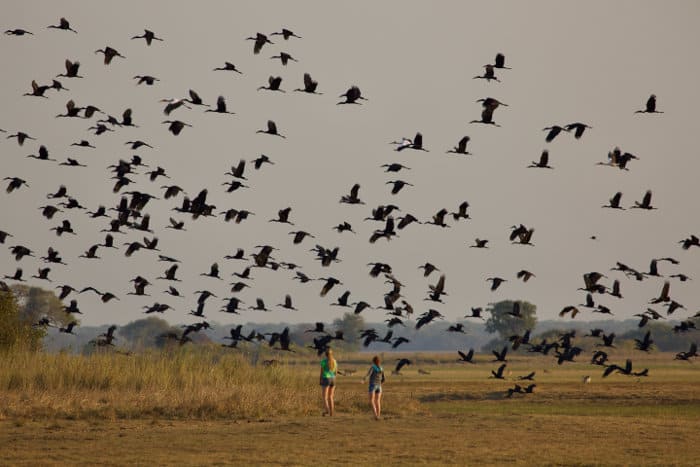
Nighttime game drives are possible in all of Zambia’s parks and offer a new animal experience. Those in South Luangwa are famous for tracking leopards.
North Luangwa is arguably the best national park in all of Africa for wild multi-day walking safaris.
Canoeing isn’t an add-on but just what you do in Lower Zambezi National Park, sometimes for multiple days.
You can go walking with rhinos in Mosi-oa-Tunya National Park, very close to Victoria Falls. Horseback safaris are possible in many parks.
Kafue and Liuwa Plain national parks are seriously off the beaten track and you can do just about anything there. And if you go too far the animals will be the first to complain: dangerous encounters with buffalo and elephant are part of the experience in these parks.
The lack of other visitors
Zambia has a superb network of national parks and all of them are relatively off the beaten track.
International tourists to Zambia remain at under 1 million per year; close to 20 million visit South Africa. The new KAZA UniVisa is making it easier to travel in Zambia and Zimbabwe. However, most people are only visiting Victoria Falls.
In some countries you try and go off the beaten track. In Zambia you may be looking for other people. One Africa Freak contributor spent two weeks backpacking through the country in 2013. Outside Livingstone he only encountered one German NGO worker and a Finnish couple.
Although some camps have been around for decades, it still looks like safari tourism is in its infancy here. With less people around the safari feels more real and more authentic. Crowds don’t gather around animals and wildlife is less habituated to the presence of vehicles.
Great value owner-run lodges and camps

Safari is big business and many of Africa’s top camps have been bought out by international chains. Or the camps are already part of large operators who run many lodges and camps; for example, the chain of Wilderness camps and Singita.
Most of Zambia’s camps continue to be small and owner-operated, which helps to provide an enhanced attention to detail. Some are so longstanding they look pretty rundown. Still, they provide comfort for an excellent price.
Most importantly, these longstanding camps have a premium on location. They are positioned in wildlife-rich areas, completely cut off from the rest of the world.
Wildlife
Okay, Zambia doesn’t have the same animal populations as its neighbours. There are more wild mammals in Tanzania, Kenya, Botswana and South Africa. But ask yourself: even if there are 1.5 million wildebeest in Serengeti National Park, how many can you actually see?
What Zambia offers is an excellent variety of wildlife and an opportunity to look beyond the famous big five.
Elephant, buffalo, giraffe and hippo are overrepresented. There are many thousands of these and they are a highlight in almost all Zambia’s national parks.
Rhinos became extinct but have been reintroduced to Mosi-oa-Tunya National Park, where they are protected by a 24-hour team of armed guards.
In other countries lions are the easiest big cat sighting. Lion numbers aren’t as impressive here and it’s less common to see them on a Zambia safari. Still, with a week on safari you should come across three to four prides.
Less lions means more space for walking safaris. And more space for other predators. Zambia, especially South Luangwa, is an excellent place to see wild dogs and leopards.
The Major Challenge – Getting around Zambia
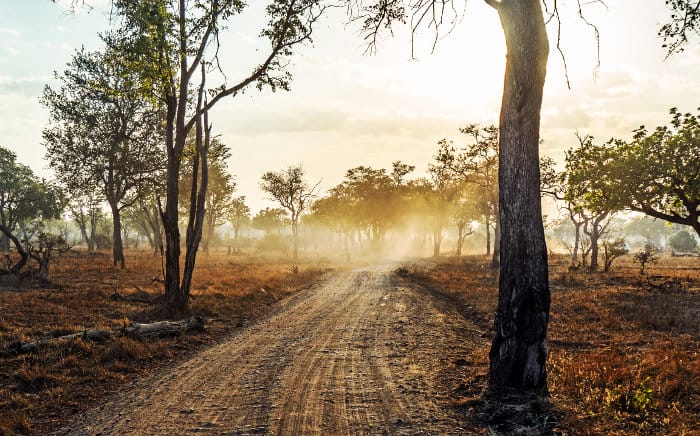
Getting around is a headache. Zambia is huge. It’s roughly the combined size of Italy and Germany and Denmark and Netherlands and Switzerland. Oh, and some of the roads are terrible.
Where are the national parks? In areas where there are hardly any people of course! Which means long journeys on bumpy four-wheel drive tracks – it’s hard to even call them roads.
Unlike Tanzania or Botswana the safari destinations are not contiguous. In Zambia the wildlife exists in isolated parks that are spread far across the country. You can’t drive from one and enter another. Instead you must spend 12 hours bumping across arid bush to reach the next stop.
Overland travel takes time and there is no natural route to piece together all the parks. Instead, you must backtrack to major towns and cities – like Lusaka – before continuing to another destination.
Zambia is great for an extended African adventure but it’s impossible to see a lot of the country in a short amount of time. This country can test your patience, especially if it’s your first trip to Africa.
Safari flights are the other option. These are comfortable and efficient. Unfortunately they are also expensive, bringing a Zambia safari into the same price range as its neighbouring countries.
But hey, if it was all so good more people would be doing it right? And if you want to connect with your wild side you do need to venture deep into the wild.
When to Go on a Zambia Safari

In Zambia it is worth seeking out the best months to go. Heavy rainfall is a huge challenge when the roads are already in a bad state. Plus there is no real need to avoid peak season visitor traffic.
The Zambian climate is more aligned with countries to the south – Botswana and Zimbabwe – than those to the north. In this vast country the rains first fall in the north and then spread to the south, something to remember when traveling in shoulder seasons.
December to March – Rainy season; best avoided
- Hot and humid
- Big storms and flash flooding
- Many camps are closed and most national park tracks become inaccessible
- Wildlife is highly dispersed and difficult to spot
- Avoid these months unless you absolutely have no choice
April and May – Lush, green and okay game viewing
- Still warm but getting cooler and more manageable
- The rains have stopped; some camps remain closed
- Beautiful green landscapes and chance to see lots of newborn animals
- The safari is a real adventure and game viewing is okay
- Victoria Falls is at peak flow and the spray soaks visitors in seconds
June to August – Dry season; best months to visit
- Warm days, cool evenings and cold nights
- Excellent game viewing as wildlife returns to rivers and permanent waterholes
- All destinations are accessible and North Luangwa is open for walking safaris
- The best months to visit Zambia
September to November – Hot; stunning game viewing
- Temperatures are climbing and can become stifling by November
- The landscape remains dry and the game viewing is superb
- Rain in the north in November, usually not in the south
- Victoria Falls at its lowest flow rate and can be a disappointment
- An excellent time to visit if you can handle the heat
Zambian Safari Destinations
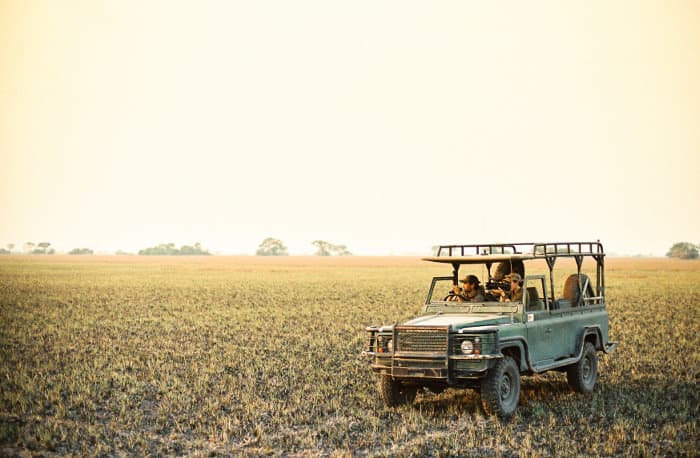
Note that combining these Zambian safari destinations is not always straightforward. With a Zambia safari you have to make choices. For a more detailed Zambia destination guide read here.
Livingstone
Named after the British explorer, Livingstone feels like a throwback from forgotten times. It’s broad, dusty and doesn’t have the charm you may expect. It’s included here as Livingstone is next to Victoria Falls and has a good international airport (remember Harry Mwanga Nkumbula?).
We recommend getting accommodation outside Livingstone, in Mosi-oa-Tunya National Park instead. This provides an excellent wildlife experience to suit a safari expedition.
Mosi-oa-Tunya National Park (Victoria Falls)

The locals call the falls The Smoke That Thunders, which is much better than them being named after an old English monarch. Read our complete guide to Victoria Falls here.
Mosi-oa-Tunya is the national park on the Zambian side, incorporating the falls and a 30 kilometre stretch of the Zambezi River. Camps and lodges on the river are excellent value and provide daily encounters with hippos, baboons, monkeys, elephants and other wildlife.
Zambia’s only rhinos live deeper inside this park. Without the rhinos it’s not worth doing a game drive or walking safari in Mosi-oa-Tunya National Park. Stick to a sunset cruise or seeing animals from your camp.
However, these rhinos can be visited on walking safaris that take place during the middle of the day. This is when the beasts are snoozing and you can approach to within just 10 – 15 metres.
Lower Zambezi National Park
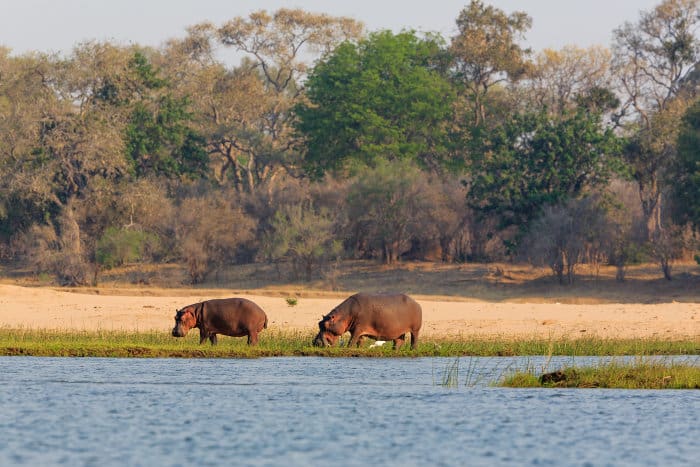
Hippos cover a flooded stretch of the Zambezi River and can gather in epic pods. Elephants swim across the river from Zimbabwe, using their trunks as snorkels. Buffalo also swim, arriving in large herds.
This is Lower Zambezi National Park in southern Zambia, part of a World Heritage wetland with Mana Pools National Park across the water – read our Zimbabwe safari guide here.
Once a private wilderness owned by a former Zambian president (no, not Harry Mwanga Nkumbula), this park is a smaller version of Botswana’s Okavango Delta.
Four-legged giants dominate the landscape and the birdlife is superb. Zebra and wildebeest join buffalo on the plains while impala provide prey for packs of wild dogs. Roan antelope are a stunning safari find although lions and leopards are very difficult to encounter. Strangely the park has no giraffe either.
Game drives are good but much more exciting at night. Game walks really get your heart going, especially the intense proximity to buffalo and elephant. The highlight is canoeing, casually paddling down the river for a half or full day; in a canoe you enjoy some really wild animal scenes.
This is Zambia’s second most popular safari destination and the wetland ecosystem is a dramatic contrast to all the others. Scheduled safari flights are the easiest way to get here. By road it’s ten hours from Livingstone or Kafue, or eight hours from South Luangwa.
South Luangwa National Park
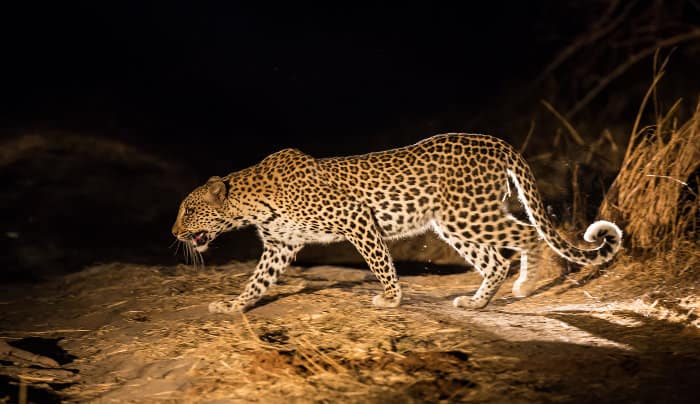
Zambia’s flagship and one of the finest destinations in Africa, South Luangwa offers a classic big-game safari experience. Habitats collide here, with woodland meeting grasslands, savannah and lush riverine forest.
It’s wild, beautiful, and supports an excellent density of wildlife. For a first-time safari visitor, South Luangwa is a big-four destination, with strong populations of elephant, buffalo, leopard and lion. However, the devil is in the detail because South Luangwa has more mammal species than almost any other park in Africa.
Unique animals are one of its specialties. This is one of the only places to encounter Crawshay’s zebra, Thornicroft’s giraffe (Rhodesian giraffe) and Cookson’s wildebeest. All these animals are abundant and difficult to miss.
Nighttime game drives follow a river and offer stunning leopard sightings. They are some of the best nighttime drives in Africa and come as standard on South Luangwa tours – this is a private concession style experience for a cheaper national park price. You also go searching for genets, porcupines, serval cats, along with spotted hyenas on a hunt.
Game walks are common on most programs as well. These are typically a full morning or afternoon activity – for multi-day walks see North Luangwa below.
Most camps and lodges are located along a river in the east of the park. Explore to the west and it’s easy to spend a day without encountering any other people. It’s worth paying more for a camp that is inside the park as the budget accommodation is located outside the park boundaries and lacks a little in wildlife atmosphere.
South Luangwa is in north central Zambia, a good two-day drive from Victoria Falls. Lusaka to South Luangwa takes around ten hours by road. Thankfully, it is now fully tarred and a relatively ‘easy’ trip!
Again, scheduled flights save on time. The park is on route to Malawi and Tanzania for a pan-African adventure.
North Luangwa National Park

Although a distinct national park, North Luangwa is part of the same Luangwa ecosystem. There’s an unbroken wildlife corridor and wildlife moves freely between the two parks.
North Luangwa National Park is very special in that it is exclusively set aside for walking safaris. There is only one road in the park and this provides access to different permanent camps. The rest is just pure wilderness, ripe for adventure and exploration.
Elsewhere in Africa you can do game walks in parks where you also do game drives. In North Luangwa there are no other vehicles. And the wildlife is virtually the same as in South Luangwa.
One option is to stay in a permanent camp and go on different walks each day. Another option is a multi-day safari that uses fly camps. This is a rough and ready safari in landscapes where few people have ever ventured.
The park is even more remote compared to South Luangwa (add on 2-3 hours extra travel time). Facilities are limited and the experience is not for the feint of heart. But if you dream of a safari from the era of 19th-century explorers then this is one for you.
Note that North Luangwa is only open in the dry season from June to October. July and August are best as it is cooler.
Kafue National Park

One of Africa’s largest parks yet mostly unknown, Kafue epitomizes Zambia’s position as Africa’s underrated gem. It’s amazing how a park that’s almost the size of Belgium, or the Serengeti, can go completely under the radar.
Once again, a mix of ecosystems form a stunning Zambia safari experience. Most of the park is a mix of riverine forest, miombo woodland and swamps. The northern third is taken over by the epic Busanga Plains, a grassland that floods each year and becomes inaccessible from November to April.
Antelope appear to be everywhere. Kudu and waterbuck march in herds that are far larger than elsewhere. Oribi and puku are abundant, along with the usually elusive roan antelope. If these names are alien to you then check out Africa’s most elegant antelope species, and largest antelope species.
Thousands upon thousands of red lechwe occupy the swamps, along with other semi-aquatic safari specialists such as sitatunga. Add in the safari favourites – elephant, buffalo, hippo, zebra, wildebeest, hyena – and this is a stunning destination.
Of course, all these antelope provide food for predators. Lions, leopards and cheetahs are all plentiful in the park. These animals do prefer areas of high vegetation around the rivers and swamps, so you will need some patience for the sightings.
Throw in Zambia’s trademark mix of activities – nighttime drives, game walks, plus boat safaris on the swamps and river – and Kafue can keep you entertained for four to five days. Camps are excellent value and with a multi-day safari you should aim to stay in both the north and south of Kafue.
July to October is best for spotting the cats and for game viewing in general. Note that most of the park’s camps close during the wet season and at least half the park is inaccessible.
Kafue is five hours west of Lusaka and yes, it’s a mission to get there.
Liuwa Plain National Park

Flights to Liuwa Plain National Park only depart twice a week. Hidden in the far west of Zambia, close to Angola, this is one of Africa’s least visited parks. Just think: it receives two 16-seater plane loads of visitors per week, plus anyone braving the torturous ten-hour roads from Livingstone or Lusaka.
This truly is a lost world yet it has been protected by the Lozi tribe since before written records. The Lozi people gazetted the park way back in the 1880s, so it can lay claim to be the oldest safari reserve anywhere in Africa.
Liuwa is literally just a plain, a grassland that extends as far as the eye can see. Again it’s the diversity of wildlife that is so spellbinding. Red lechwe, eland, oribi, roan, blue wildebeest, tsessebe, buffalo, sitatunga and others are present in large numbers.
Lions have had to be reintroduced (nobody seems to know when they went missing). You probably won’t see them. Cheetahs, wild dogs and spotted hyenas are the main predators, and safari regulars will love the intensity of encountering them.
Elephants and rhinos are missing and this has been one key to successful conservation. A park without these two famous animals doesn’t attract poachers or hunters, so Liuwa Plains survived the savage animal killings that took place from the 1850s to 1990s.
Most of the park is a floodplain and it does genuinely flood, every year from January to April. Go on safari during these months and the only way is to do game walks or to paddle in canoes (these are wild and unpredictable, and probably not advisable if you’ve never been on safari before).
Herds migrate around the plains based on the flooding and from June onward it is dry enough for game drives. As water rescinds you can enjoy brilliant scenes around the last few waterholes, with October to November being the best time of year for a Zambia safari here.
Allow at least three days. Liuwa Plain is an expedition and the challenge shouldn’t be taken lightly.
Planning a Zambia Safari
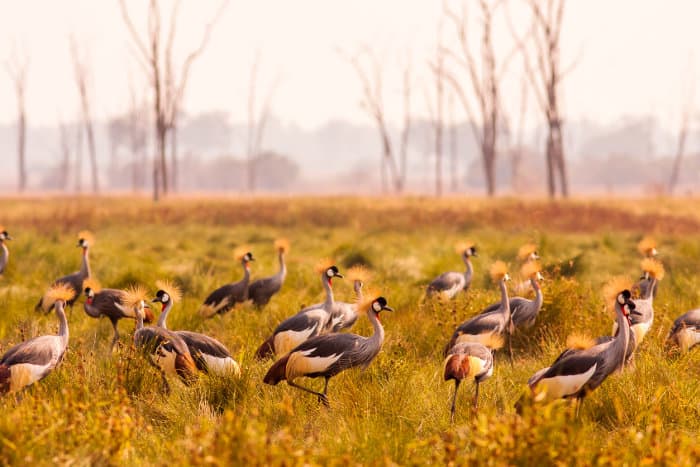
All set on Zambia? You can get personalised safari advice from a specialist by clicking here. Or if you have enough time, travel to Zambia and make a plan when you arrive. A lot of good safari operators can be found in Lusaka and Livingstone and they can arrange tours all over the country.
Most importantly, don’t discount a Zambia safari. This is the place where the wild side will find you.

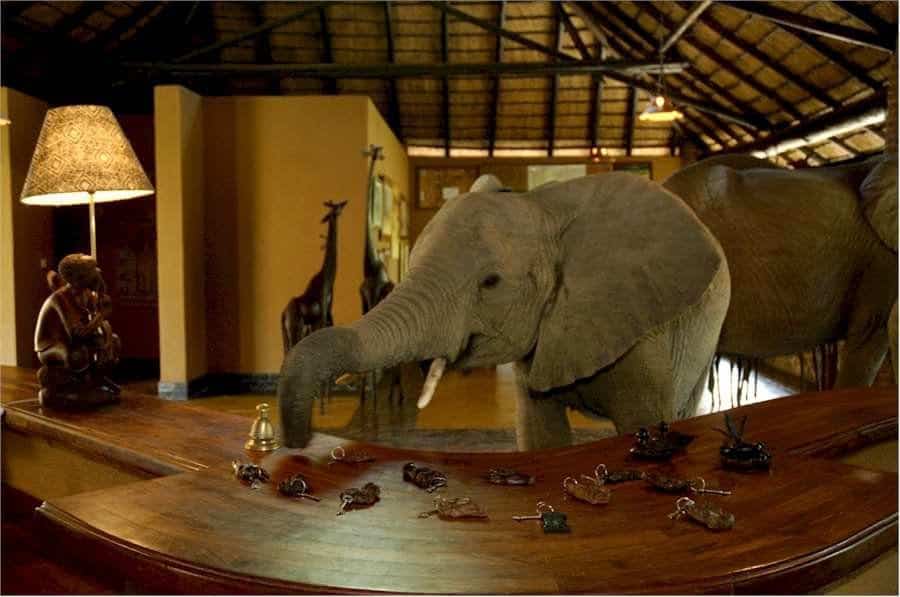


We recently purchased Redcliff Lodge located on the Lower Zambezi near Feira or Kavalamanja. It is the most beautiful area and the lodge needed some TLC which we have given it so far. Check our http://www.redcliff-lodge.com
Great article – well written and accurate – have lived here in Zambia for 7 years and absolutely love it and I think the above article sums it up perfectly!
Where are you based, Tony (I used to live in Lusaka)?
Glad you found the Zambia safari blog post useful! 🙂
Best,
Michael